 |
 |
 |
|
February/March 2011
|
How the South Campus came to passBy Carlene London
The growth has been achieved in spurts, each one based on the needs of the time. At some junctures it was propelled by the need to widen offerings to meet regional demands for a broader skills base. One could refer to these as phases of intellectual development, just as it could be said that the periods where the concentration was on construction of new buildings were those of infrastructural development. There had to be places and spaces to accommodate the minds that have consistently been invited to find intellectual nourishment within the precincts of the Campus since it was ICTA of the University College of the West Indies. That young minds have eagerly accepted the invitation is without dispute, as the demand for places in the University has been unrelenting since its inception. Every year the graduation exercises prove this, with ceremonies now having to be split into six separate functions to accommodate over 3,000 graduates ready to take on the world. Supporting this growth through the Campus’ current facilities has been progressively challenging – so many factors influence capacity. The much heralded beauty of St. Augustine’s lush and precious greenery, a legacy from the ICTA days, is not only worthy of preservation for its aesthetic value, but because it provides a vital green space in an environment constantly under threat from urbanization and its often unfriendly relationship with nature.
Students, particularly, are distressed by these transportation woes, and although The UWI has done all it can to alleviate it by adding car parks, providing shuttle services, expanding student accommodation to help with the commute, increasing security to protect life and vehicle, there is only so much that can be done in the face of ever increasing recruitment.
After a period of intensive structural development in and around St. Augustine, spearheaded by the former Principal and now Pro Vice Chancellor for Planning, Dr. Bhoendradatt Tewarie, the current Principal and Pro Vice Chancellor, Prof Clement Sankat shifted his focus to expanding outside of what was generally viewed as the university town. It was a shift based on a desire to broaden access to tertiary level education as a whole; to take education out to what has traditionally been seen as rural communities. This was in line with the Government’s target of achieving a participation rate of 60% of the relevant cohort in tertiary education. Out of this philosophy, studies to explore needs and feasibility were commissioned. As part of the preparation of the current University Strategic Plan 2007-2012, the St. Augustine Planning Task Force submitted a report in January 2007 that included a compilation of data, part of which was based on a series of surveys undertaken with both internal and external stakeholders. The report on the findings of a National Survey to measure public perceptions of The UWI in Trinidad & Tobago indicated that at least 75.5% of the persons surveyed agreed that The UWI should establish a Campus in Tobago. Further, 66.8% believed that The UWIshould establish a Campus in South Trinidad. The response corroborated the ongoing support for the idea of a south Campus that was heard from both inside and outside of the University.
The commissioned studies have shown that the supply derived from the existence of a large number of feeder schools in the selected area total at least 38 high schools in the counties of St. Patrick, Victoria and the South Eastern districts of Rio Claro and Mayaro. These schools included some of the leading and emerging high-performing secondary schools in Trinidad. The studies also indicated that a cross-section of the existing workforce in the region required opportunities for continuous learning and upgrade of skills. In 2010, the Minister of Science Technology and Tertiary Education, Senator Fazal Karim expressed the Government’s desire for the establishment of a South campus that would seek to broaden access to tertiary level education in the southern region of Trinidad and deliver programmes catering to the specific needs of the southern region and the wider economy. In response to the Government’s request for expansion of tertiary education into the Southern region of the country, Prof Sankat at the initial stage, prepared and submitted to Minister Karim a short paper on the ‘Location Selection Criteria for a South Campus of The UWI St. Augustine Campus’. On October 14th 2010, the Cabinet agreed to the allocation of a 100-acre parcel of State land in the Penal/Debe area, as well as TT $2million to support the development of a St. Augustine South Campus, under the Ministry of Science Technology and Tertiary Education and the Public Sector Investment Programme. The allocated land is of ideal location, as it exists at the crossroads of direct access roads and highways to connect to the North and the main Campus at St. Augustine to San Fernando and with the construction of the new highway extended from San Fernando to Point Fortin, the other areas in the deeper southern region will be linked.
Plans are still being developed and consultations are still taking place, but with 100 acres already earmarked and a will to begin the process, it is only a matter of time before another cohort of graduates will boast of being the first to emerge from the south. It is part of the thrust to take education out to the people. It is part of the university’s drive to continue to be relevant, responsive and ready to meet the challenges of development. It is part of what makes The UWI St Augustine the people’s campus. |

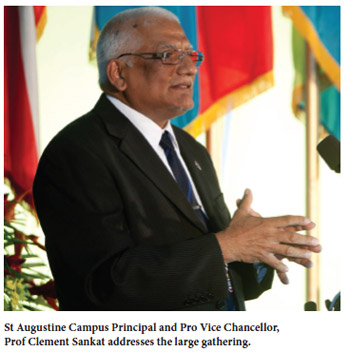 For just over 50 years, the St. Augustine Campus of The University of the West Indies (UWI) has stood its ground, growing out of the Imperial College of Tropical Agriculture (ICTA) from which it incarnated with a Faculty of Agriculture, to a robust and bustling campus offering undergraduate and postgraduate programmes through five faculties: Engineering, Humanities and Education, Medical Sciences, Science and Agriculture and Social Sciences.
For just over 50 years, the St. Augustine Campus of The University of the West Indies (UWI) has stood its ground, growing out of the Imperial College of Tropical Agriculture (ICTA) from which it incarnated with a Faculty of Agriculture, to a robust and bustling campus offering undergraduate and postgraduate programmes through five faculties: Engineering, Humanities and Education, Medical Sciences, Science and Agriculture and Social Sciences.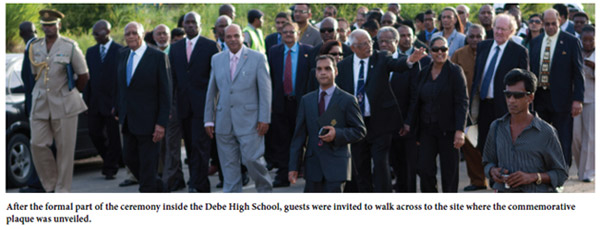 One element of this is the increase in traffic congestion, and the Campus, locked within its own grid, is a site of daily hassle as streams of cars try to get in and out via two exits that lead to very inadequate road spaces. Those cars coming in and out are also looking for spaces to park their bodies while their owners go about their business on the campus.
One element of this is the increase in traffic congestion, and the Campus, locked within its own grid, is a site of daily hassle as streams of cars try to get in and out via two exits that lead to very inadequate road spaces. Those cars coming in and out are also looking for spaces to park their bodies while their owners go about their business on the campus. 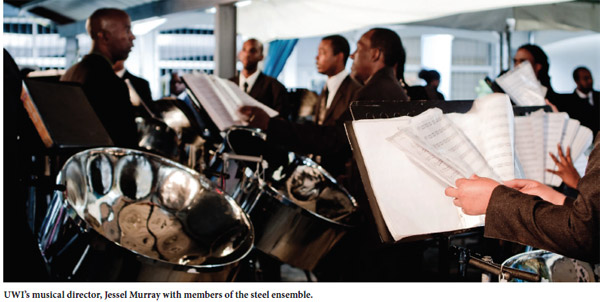 Certainly, further physical expansion of the Campus at St. Augustine is difficult and for The UWI to continue to provide its unique services to tertiary education, innovative solutions had to be found.
Certainly, further physical expansion of the Campus at St. Augustine is difficult and for The UWI to continue to provide its unique services to tertiary education, innovative solutions had to be found.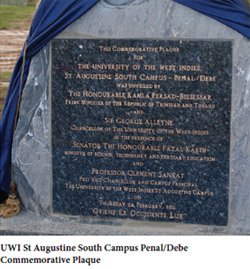 A 2008 study conducted by the Business Development Office at the St. Augustine Campus on “Addressing Student Needs for University Education in South Trinidad” commissioned by Prof Sankat, concluded that a second Campus, located in the country’s southern region, would extend the University’s reach and would respond to the needs of key south-based industrial and business sectors, while at the same time serving to reduce the congestion at the St. Augustine Campus.
A 2008 study conducted by the Business Development Office at the St. Augustine Campus on “Addressing Student Needs for University Education in South Trinidad” commissioned by Prof Sankat, concluded that a second Campus, located in the country’s southern region, would extend the University’s reach and would respond to the needs of key south-based industrial and business sectors, while at the same time serving to reduce the congestion at the St. Augustine Campus. 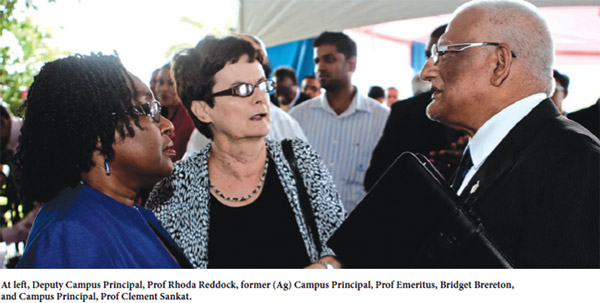 Not acting as an independent campus, but rather an extension of the St. Augustine Campus, the South Campus, will deliver startup programmes such as Management Studies, Psychology, Economics, Education and Law based on the evidenced demand of its studies. Phase One of the development will include the establishment of the flagship Faculty of Law to accommodate approximately 450 students; a multi-faculty building that will be fully equipped for multi-mode learning; the building of a student dormitory and student union building; as well as other sporting and recreational facilities.
Not acting as an independent campus, but rather an extension of the St. Augustine Campus, the South Campus, will deliver startup programmes such as Management Studies, Psychology, Economics, Education and Law based on the evidenced demand of its studies. Phase One of the development will include the establishment of the flagship Faculty of Law to accommodate approximately 450 students; a multi-faculty building that will be fully equipped for multi-mode learning; the building of a student dormitory and student union building; as well as other sporting and recreational facilities.